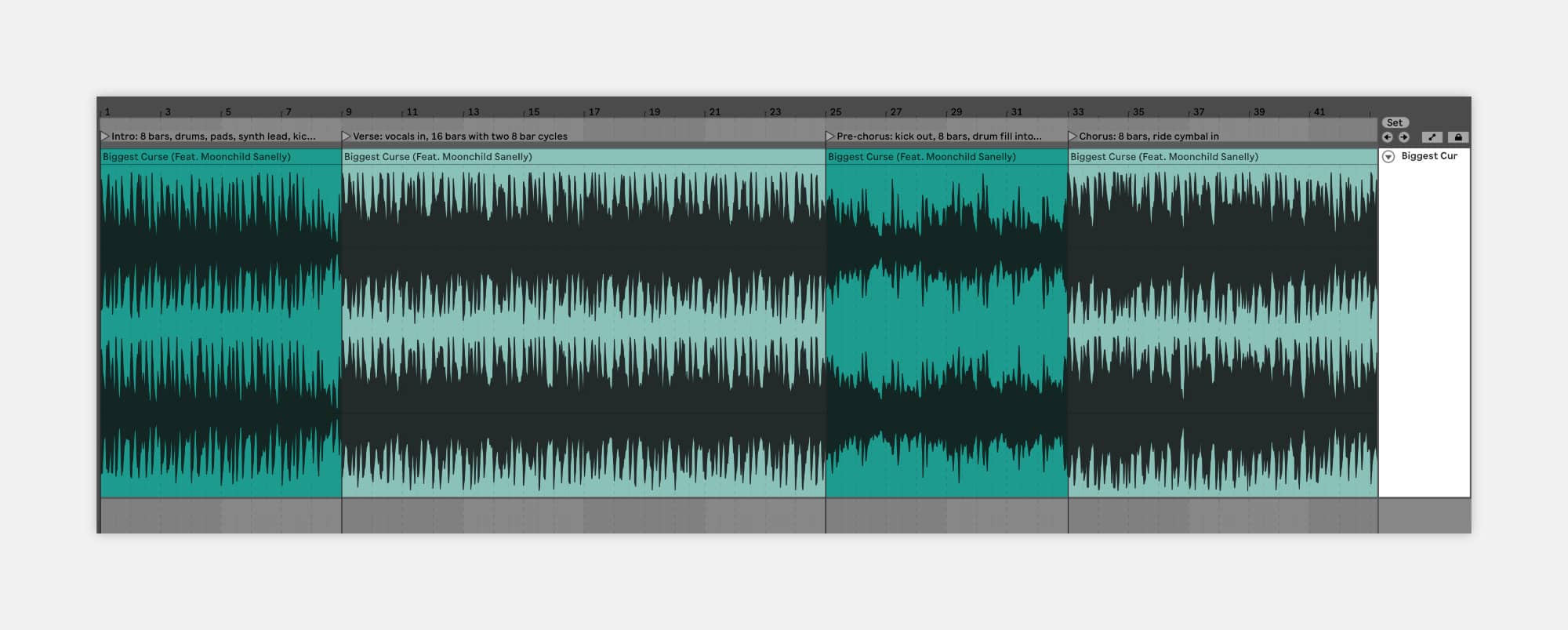Arrangement is the process of taking a rough collection of musical ideas, loops and parts and structuring them into a finished piece of music.
Arranging music is one of those really tricky things that many music makers, myself included, struggle with. There are plenty of tools to help you come up with ideas, for example by generating chords and melodies, but there is little to help with arranging those ideas into a musical structure.
Fortunately, there’s a simple technique you can use to help create structure from your ideas. It’s something I use regularly in my own music making. It not only helps me get to an arranged track if I ever get stuck, but has also helped me learn more about how music is arranged so I can get better at creating arrangements in the future.
The idea is simple; to create your own arrangement start by copying a structure that you know already works. Here’s what you do:
Find a song that you like in a similar style to the one you’re working on.
Listen through the piece and take detailed notes about how it’s arranged. I’ll use one of my own pieces as an example.
The example I’ve used follows a typical pop song structure, but things might be quite different for different styles, for example a dance or Hip Hop track, but you get the idea.
If you have the audio file for the song, try loading it into your DAW’s arrangement view and using locators/markers to mark out the structure in the same way as above. When you’re done you’ll have a guide structure right there in your session! Don’t forget to time-stretch the track to match the tempo of your set, so that the markers line up nicely with your session’s bars and beats.

Now that you have this ‘arrangement map’, either as detailed written notes, or as a marked out structure in your DAW, simply fill in the blanks. Take the parts you’ve come up with and slot them into the structure accordingly. You might find this leaves some gaps where you don’t have material that fits. This just means you might need to write some more parts to fill in those gaps.
And that’s it, you should now have a rough structure for your piece. From here it’s simply a process of creating the additional parts you need and slotting them in.
Don’t forget about things like fills, risers, variations and other incidental sounds and FX which could add to the structure of the arrangement. You can always go back and listen a few times to pick up on parts you may have missed the first time round.
It might feel a bit weird at first, copying someone else’s idea, but an important thing to remember is that there are really only a few different kinds of arrangements. Listen to any pop song; for the most part they follow the same rough Intro → Verse → Chorus → Verse → Bridge → Chorus structure, or some slight variation of that. The same goes for many other genres; they all have some kind of rough common arrangement structure.
By applying this technique over and over you’ll start to notice commonalities in structures across styles and eventually you’ll be able to recreate these structures without thinking. You’ll even start to innovate and expand upon them to create something new.
You’ll also notice that, even though you might copy the arrangement of another song almost beat for beat, you’ll still end up with something unique, because you’ve used different instruments and sounds.
You also don’t have to rigidly stick to the form that you copy; remember that it’s just a guide to get you started. If something from the copied arrangement doesn’t feel right or doesn’t quite work for your piece then go with your gut and try something different.
You could even splice together two separate arrangements and use the bits you like from each.
Arrangement is tough, believe me I know! I’ve been making music for over 10 years and I still struggle with it all the time. Keep practicing with this technique and you’ll get better.
There are plenty of other tips and tricks for creating engaging arrangements, but one of the best parts about this technique is that by copying different arrangements you’ll naturally pick up on many of those tricks anyway.
Good luck with your next arrangement!
Share
Wanna be the first to hear about new ELPHNT packs, videos and workshops? Join the mailing list to stay up to date with everything new from ELPHNT.
Free forever. No spam. Unsubscribe any time.
We noticed you're visiting from United Kingdom (UK). We've updated our prices to Pound sterling for your shopping convenience. Use United States (US) dollar instead. Dismiss